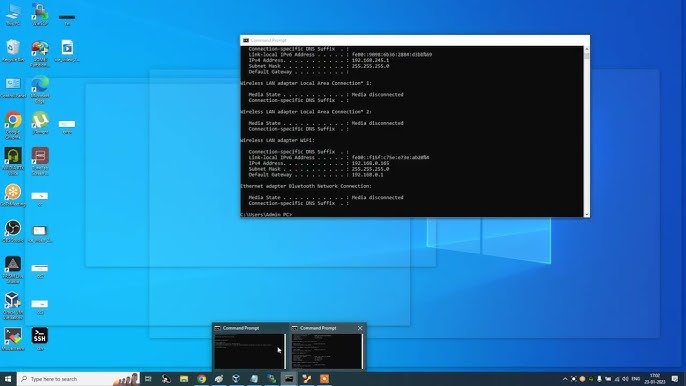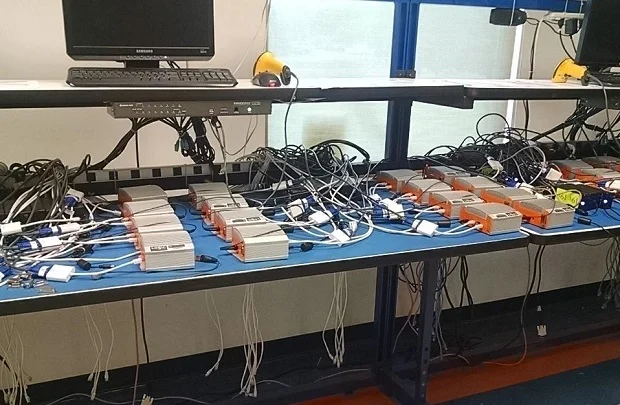Introduction
In the world of network data management, ensuring seamless connectivity and efficient data transfer is paramount. One of the challenges often encountered by IT professionals is managing and troubleshooting connection timeouts, particularly when dealing with Network Data Management Protocol (NDMP). A specific parameter that plays a crucial role in this context is “Q opt ndmpconnectiontimeout.” Understanding how to configure and optimize this parameter can make a significant difference in maintaining the stability and reliability of your data management processes. In this blog, we’ll dive deep into what Q opt ndmpconnectiontimeout is, why it’s important, and how you can effectively manage it to ensure smooth operations.
Understanding Q opt ndmpconnectiontimeout
The term “Q opt ndmpconnectiontimeout” refers to a configurable parameter within NDMP, which is a standard protocol used for controlling backup, recovery, and other data management operations between different platforms. This parameter specifically defines the timeout duration for connections established through NDMP. In simpler terms, it determines how long the system will wait for a connection to be established or maintained before it is considered to have timed out.
A connection timeout can occur for several reasons, such as network latency, server overload, or configuration issues. When the Q opt ndmpconnectiontimeout parameter is not properly configured, it can lead to disruptions in data backup processes, causing delays, incomplete backups, or even failures. Therefore, understanding and configuring this parameter is essential for maintaining the efficiency and reliability of NDMP-based operations.
Why is Q opt ndmpconnectiontimeout Important?

The Q opt ndmpconnectiontimeout parameter is crucial for several reasons:
- Maintaining Connection Stability: Properly configuring this parameter helps ensure that the connection between the NDMP server and client remains stable. This is particularly important in environments where data transfer occurs over long distances or through multiple network nodes, where the likelihood of connection interruptions is higher.
- Optimizing Data Transfer: A well-configured Q opt ndmpconnectiontimeout ensures that data transfers are not prematurely terminated due to timeouts. This is critical for completing full backups and preventing data loss.
- Reducing System Overhead: By setting an appropriate timeout duration, you can reduce unnecessary system overhead caused by repeated connection attempts. This leads to more efficient use of system resources.
- Enhancing Troubleshooting: When issues do arise, having the Q opt ndmpconnectiontimeout parameter correctly configured allows for more straightforward troubleshooting. IT professionals can quickly determine whether the problem lies with connection stability or other factors.
How to Configure Q opt ndmpconnectio
Configuring the Q opt ndmpconnectiontimeout parameter involves several steps, depending on the specific NDMP implementation and the systems in use. Below are general guidelines that can be adapted to your environment:
1. Assess Your Network Environment
Before setting the Q opt ndmpconnectiontimeout, it’s essential to understand your network’s characteristics. Consider factors such as:
- Network Latency: High latency can cause delays in establishing connections, which might necessitate a longer timeout duration.
- Bandwidth Availability: If bandwidth is limited, data transfers might take longer, requiring a higher timeout setting.
- Server Load: High server load can lead to slower response times, again requiring adjustments to the timeout parameter.
2. Determine the Optimal Timeout Value
The optimal value for Q opt ndmpconnectiontimeout will vary depending on your specific needs. A common approach is to start with a moderate value and adjust based on observed performance. For instance:
- Short Timeouts (30-60 seconds): Suitable for environments with low latency, high bandwidth, and minimal server load. These settings help to quickly detect and recover from connection issues.
- Medium Timeouts (60-120 seconds): Ideal for environments with moderate latency and server load. This range provides a balance between responsiveness and connection stability.
- Long Timeouts (120-300 seconds or more): Necessary for high-latency environments, such as those involving remote data centers or cloud-based storage. These settings ensure that connections are not prematurely terminated due to expected delays.
3. Implement the Configuration
Once you have determined the appropriate timeout value, the next step is to implement the configuration. This typically involves:
- Editing Configuration Files: Depending on your NDMP implementation, you may need to edit specific configuration files to set the Q opt ndmpconnectiontimeout parameter. Ensure that you have the necessary administrative privileges to make these changes.
- Using Command-Line Tools: Some systems allow you to configure parameters like Q opt ndmpconnectiontimeout directly through command-line tools. This can be faster and more efficient, especially in environments where changes need to be made across multiple systems.
- Applying Changes: After making the necessary configuration changes, ensure that they are applied by restarting relevant services or systems. This step is crucial to ensure that the new timeout settings take effect.
4. Monitor and Adjust
After implementing the Q opt ndmpconnectiontimeout configuration, it’s important to monitor system performance closely. Key aspects to monitor include:
- Connection Stability: Track whether connections are timing out more or less frequently after the configuration change. This will help you determine if the new settings are optimal.
- Data Transfer Efficiency: Monitor the completion rates and speeds of data backups. If backups are completing successfully and within acceptable timeframes, the configuration is likely effective.
- System Load: Keep an eye on system load metrics to ensure that the new timeout settings are not causing undue strain on resources.
If you observe any issues or areas for improvement, don’t hesitate to adjust the Q opt ndmpconnectiontimeout settings. It may take several iterations to find the perfect balance for your environment.
Common Issues and Troubleshooting Tips

Even with careful configuration, you may encounter issues related to Q opt ndmpconnectiontimeout. Here are some common problems and troubleshooting tips:
1. Frequent Timeouts
If you notice that connections are timing out too frequently, consider the following:
- Increase the Timeout Value: If timeouts are occurring due to network latency or server load, increasing the timeout value may provide more time for connections to establish and maintain.
- Check Network Performance: Investigate potential network issues, such as high latency or packet loss, which could be causing the timeouts. Tools like ping, traceroute, or network monitoring software can help diagnose these issues.
- Optimize Server Load: High server load can lead to delayed responses, causing timeouts. Consider optimizing server performance by balancing the load or upgrading hardware resources.
2. Slow Data Transfers
If data transfers are slow despite stable connections:
- Review Bandwidth Usage: Ensure that sufficient bandwidth is allocated for NDMP operations. Excessive bandwidth consumption by other applications can slow down data transfers.
- Adjust Timeout Settings: While timeouts typically don’t directly impact transfer speeds, setting the timeout too low can cause disruptions that indirectly slow down the process.
- Evaluate Storage Performance: Slow storage systems can bottleneck data transfers. Check the performance of your storage infrastructure and consider upgrades if necessary.
3. Intermittent Connectivity Issues

Intermittent connectivity issues can be frustrating and challenging to diagnose:
- Check for Interference: In wireless or network environments with multiple devices, interference can cause intermittent connection drops. Ensure that your NDMP operations are running on a stable and interference-free network.
- Inspect Cables and Hardware: Physical issues, such as faulty cables or network interfaces, can lead to intermittent connectivity. Regularly inspect and replace any suspect hardware.
- Update Firmware and Drivers: Outdated firmware or drivers can cause compatibility issues, leading to intermittent connectivity. Ensure that all relevant components are running the latest versions.
Conclusion
The Q opt ndmpconnectiontimeout parameter is a critical component in managing NDMP-based data operations, particularly when it comes to maintaining stable and efficient connections. By understanding how to configure and optimize this setting, you can significantly improve the reliability of your data management processes, reduce the likelihood of disruptions, and enhance overall system performance.
Whether you’re dealing with a small-scale local network or a large, complex data center environment, paying attention to Q opt ndmpconnectiontimeout is essential. With the right configuration, you can ensure that your NDMP operations run smoothly, keeping your data secure and accessible at all times.
As with any technical configuration, it’s important to monitor, adjust, and troubleshoot as needed. By staying proactive and informed, you can make the most of Q opt ndmpconnectiontimeout and maintain a robust and resilient data management infrastructure.
